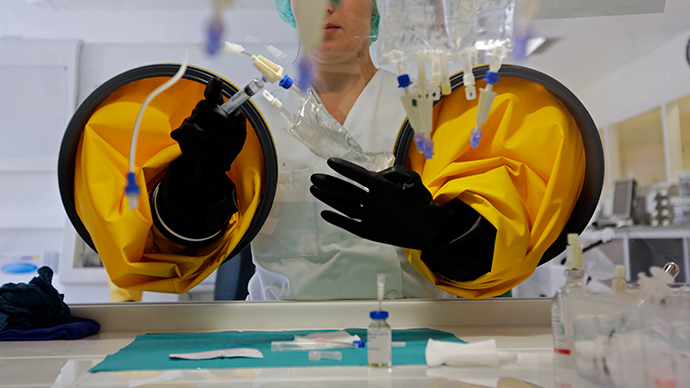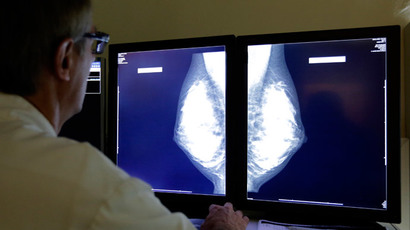Seek and destroy: New ‘nanorobots’ may revolutionize cancer treatment

Miniscule robots are set to start hunting down cancerous cells in the human body and destroy them with their nanoweapons, new research suggests. The nanorobots to be used have had a tumor-recognition module installed for the purpose.
While it appears like something out of a SciFi novel at first, University of California's Davis Cancer Center has already published the study in Nature Communications and provides what is apparently a complete solution through being able to both detect and detroy.
The nanoparticle is called “nanoporphyrin” and is equipped to both hunt and destroy cancerous tumors in the human body. A nanometer is one billionth of a meter meaning that the technology is extremely small.
“Nanoporphyrins greatly increase the imaging sensitivity for tumor detection through background suppression in blood, as well as preferential accumulation and signal amplification in tumors,” the study abstract notes.
“Furthermore, nanoporphyrins act as programmable releasing nanocarriers for targeted delivery of drugs or therapeutic radio-metals into tumours.”
Additionally, nanoporphyrins have the benefit of making tumors more easily seen on MRI scans.
Cancer is one of the world’s most deadly diseases, killing some 8.2 million people in 2012 with some 14.1 million being diagnosed overall.
Currently, chemotherapy targets all of a certain type of cell rather than specifically targeting cancerous cells, and this new treatment could potentially circumvent this problem, leaving healthy cells intact.
The idea first gained gravity in December last year when South Korean scientists successfully developed a small robot that could both detect and treat the deadly illness.
However, at that point, the nanorobots were only effective in treating ‘solid’ cancers. While the idea previously existed it has been difficult to realize because of the expense and difficulty in manufacturing in large quantities.













